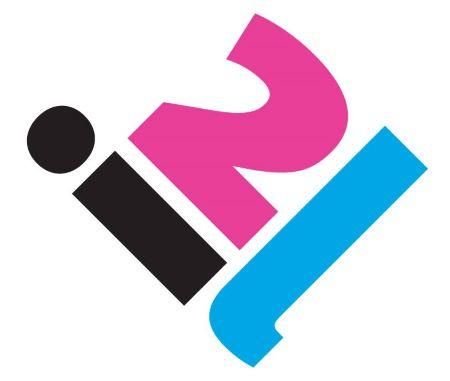How can I communicate with my team better?
A workforce that performs with poor communication is a recipe for disaster. And when you’re the one at the helm tasked with driving projects forward and managing team relationships, the pressures of avoiding a disastrous environment can feel all too much.
With 78% of organisations allowing for hybrid working, it can make it even harder to communicate with team members. Thankfully, the blueprint for creating effective team communications and nurturing a healthy, inclusive and desirable workplace is no secret.
We'll explore why effective team communication is key and the principles that any leader or team manager can easily eploy to improve their communication.
A happy team is a happy workplace
It’s a very simple statement but with the hustle and bustle of everyday working life, it can be so easy to ever so slightly lose sight of ensuring that team communication is at its optimal. But it’s so important to ensure that your team’s dynamics with one another and with you stays healthy and effective.
Why? Because teamwork, as they say, makes the dream work. Without a team that communicates effectively with one another, the more difficult it becomes to not only drive the business to success but also to encourage those positive work culture relationships. Remember that great teams are successful because of the people behind them.
With that being said, let’s look into how you can better communicate with your team.
8 ways to communicate with your team
1. Have 1-2-1 check ins
Regardless if you work in larger teams of 10+ or only oversee 2 employees, scheduling time to have 1-2-1 catch ups is crucial. It builds on the relationship between you and your employees. Plus, especially for remote workers, helps to reinforce that they are supported throughout work life irrespective of whether they’re in the office or not.
Try to regulate this to a set timeframe where possible and create calendar events for these scheduled 1-2-1s so there’s little chance of them being missed. If possible, try to have 1-2-1s outside of the workspace or office. It can make your team members feel more comfortable and helps to nurture that relationship a little more effectively.
2. Use a combination of communication styles
No two people are the same, so their learning and communication styles will inevitably be different from one another. Because of this, it’s important to remain open-minded and considerate of how you approach communication with your team. Just because emails work best for you, doesn’t mean this alone will work for them.
Try to implement communication styles that work for everyone. Utilise a combination of: face-to-face, phone calls, videos, email, presentations, software/applications and more.
3. Be open and transparent
Building a positive relationship with your team begins with trust and honesty. Of course, there is still a line that should be drawn regarding transparency but for the most part, having open communication with your team helps to reinforce their trust within you. And being the overseer of a team means that it is important people can turn to you when they need you.
If you see a team member struggling, you can offer insight if they are open to it. Providing support and constructive feedback to your will strengthen their respect for you.
4. Encourage feedback
Regardless of the amount of experience you have under your belt, you are still learning just as much as anyone else. In order to grow and improve, you must encourage feedback from your team. It can be tricky to get any actionable feedback as sometimes people don’t want to feel as if they’re overstepping boundaries or saying the wrong thing. But if your team trusts you, and you show that you’re willing to make improvements, they will give feedback with comfort.
Perhaps to help ease feelings of anxiousness, you could opt for having an anonymous suggestions box or a digital survey to encourage input from your team. You get valuable insights and your team feels heard.
5. Use tools for project management and communication
Every member of a team, from the most junior roles, to the most senior roles, need to be able to effectively manage their tasks and the use of tools, applications and softwares help with supporting this. Consider using tools for different purposes so that there is a clear distinction between what is used for each activity/task. Dedicate tools for internal communications, external communications and for managing all of your team’s tasks/workload.
Alternatively, if you can use tools that allow for integrating with another tool, it will further help to streamline communication amongst your team. If as much of everything can stay in one place as possible, it helps to decrease the chances of miscommunication or lost bits of work.
6. Have team time (outings, activities, etc)
Organising team time helps to boost morale and shapes a more enjoyable work environment where your team feels remunerated for their hard work. These could include a range of things, such as days-out, activities, lunches or even something smaller like a 20-minute board/card game session on a Friday.
As well as organising and enjoying team outings, the same effect applies to celebrating birthdays and other life ‘wins’. Showing recognition and acknowledgement to your team creates stronger bonds and stronger communication.
7. Arrange status updates
Keeping in the loop with your team about tasks lets you know what stage they are in during a project, but it also provides you with an opportunity to get involved and give support. If there’s an issue or delay with a project, by arranging a status check-up, you can encourage your team to communicate this to you and offer your guidance and help.
8. Provide training & Continuous Professional Development opportunities
Professional development and learning opportunities in general are highly recommended in any workplace, but by attending a course/training event specifically tailored to improving communications, you can further show your team that you aim to work on this. These don’t have to be active days out, they could be short virtual webinars or a team-building practice to do together.
These practical ways to better communicate with your team are the foundations for any effective and collaborative environment. And whilst they work wonders, it does also come down to your qualities as a leader. In any management role, it’s important to also possess the behaviours to use in tandem with these skills to perfect the art of effective team communication. These being: confident, appreciative, empathetic, humble, receptive and approachable.
Inspired2Learn are here to support you
Not sure where to begin with improving your team communication? Inspired2Learn offers an array of qualifications to help set you on your path of strengthening those team communication skills.
Get in touch today to start working towards being the best leader you can be, whether you’re just starting out or are already currently a team leader.






















